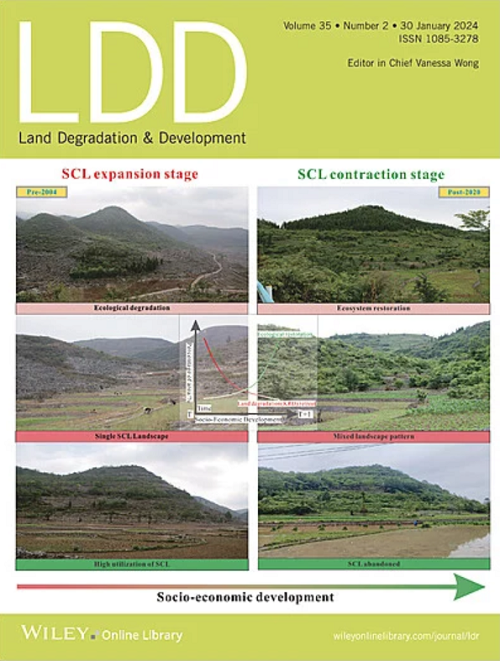Biochar Enhances the Abundance of Microbial Functional Genes Involve in C, N, P, and S Cycling: A Quantitative Metagenomic Insight From Paddy Soil
IF 3.7
2区 农林科学
Q2 ENVIRONMENTAL SCIENCES
引用次数: 0
Abstract
Although biochar application is regarded as a promising agronomic strategy to enhance soil functions, research employing quantitative techniques to evaluate its influence on microbial functional genes specifically in paddy soils is still scarce. The objective of this study was to quantify the abundance of microbial functional genes associated with carbon (C), nitrogen (N), phosphorus (P), and sulfur (S) cycling over a 2‐year paddy field experiment after biochar application, employing a quantitative metagenomic sequencing with the spike‐in method. An increase in rice yield of 7.0% and 12.5% relative to the control was observed following biochar amendment over the 2 study years. The majority of soil microbial functional genes related to C, N, P, and S cycling exhibited higher abundances in soils amended with biochar. Notably, genes associated with the Wood‐Ljungdahl pathway, Calvin‐Benson‐Bassham cycle, and denitrification increased by 18.5%–197.4%, 25.9%–116.0%, and 5.1%–405.3% over 2 years. Gene responsible for P regulators increased approximately 10.5%–109.6%, while the assimilatory sulfate reduction process exhibited an increase of 12.7%–246.0%. Random forest highlighted key biogeochemical processes (e.g., C degradation, tricarboxylic acid cycle, and dissimilatory N reduction) as potential contributors to improving rice yields. Biochar amendment led to the formation of a more complex gene co‐occurrence network, as exposed by network analysis. Collectively, these findings underscore that biochar application may consequently enhance microbial functional capacity in paddy soils, fostering improved agroecosystem functions.生物炭增加了参与碳、氮、磷和硫循环的微生物功能基因的丰度:来自水稻土的定量宏基因组研究
虽然生物炭的应用被认为是一种很有前途的增强土壤功能的农艺策略,但利用定量技术评估其对水稻土微生物功能基因影响的研究仍然很少。本研究的目的是在施用生物炭后的2年水田试验中,采用尖刺法进行定量宏基因组测序,量化与碳(C)、氮(N)、磷(P)和硫(S)循环相关的微生物功能基因的丰度。在2年的研究中,生物炭改良后的水稻产量分别比对照提高了7.0%和12.5%。与碳、氮、磷、硫循环相关的大部分土壤微生物功能基因在生物炭处理的土壤中丰度较高。值得注意的是,与Wood - Ljungdahl途径、Calvin - Benson - Bassham循环和反硝化相关的基因在2年内分别增加了18.5%-197.4%、25.9%-116.0%和5.1%-405.3%。磷调控基因增加约10.5% ~ 109.6%,而硫酸盐同化还原过程增加12.7% ~ 246.0%。随机森林强调了关键的生物地球化学过程(如碳降解、三羧酸循环和异化氮还原)是提高水稻产量的潜在因素。正如网络分析所揭示的那样,生物炭修饰导致了一个更复杂的基因共发生网络的形成。总的来说,这些发现强调了生物炭的应用可以增强水稻土的微生物功能,促进改善农业生态系统功能。
本文章由计算机程序翻译,如有差异,请以英文原文为准。
求助全文
约1分钟内获得全文
求助全文
来源期刊

Land Degradation & Development
农林科学-环境科学
CiteScore
7.70
自引率
8.50%
发文量
379
审稿时长
5.5 months
期刊介绍:
Land Degradation & Development is an international journal which seeks to promote rational study of the recognition, monitoring, control and rehabilitation of degradation in terrestrial environments. The journal focuses on:
- what land degradation is;
- what causes land degradation;
- the impacts of land degradation
- the scale of land degradation;
- the history, current status or future trends of land degradation;
- avoidance, mitigation and control of land degradation;
- remedial actions to rehabilitate or restore degraded land;
- sustainable land management.
 求助内容:
求助内容: 应助结果提醒方式:
应助结果提醒方式:


